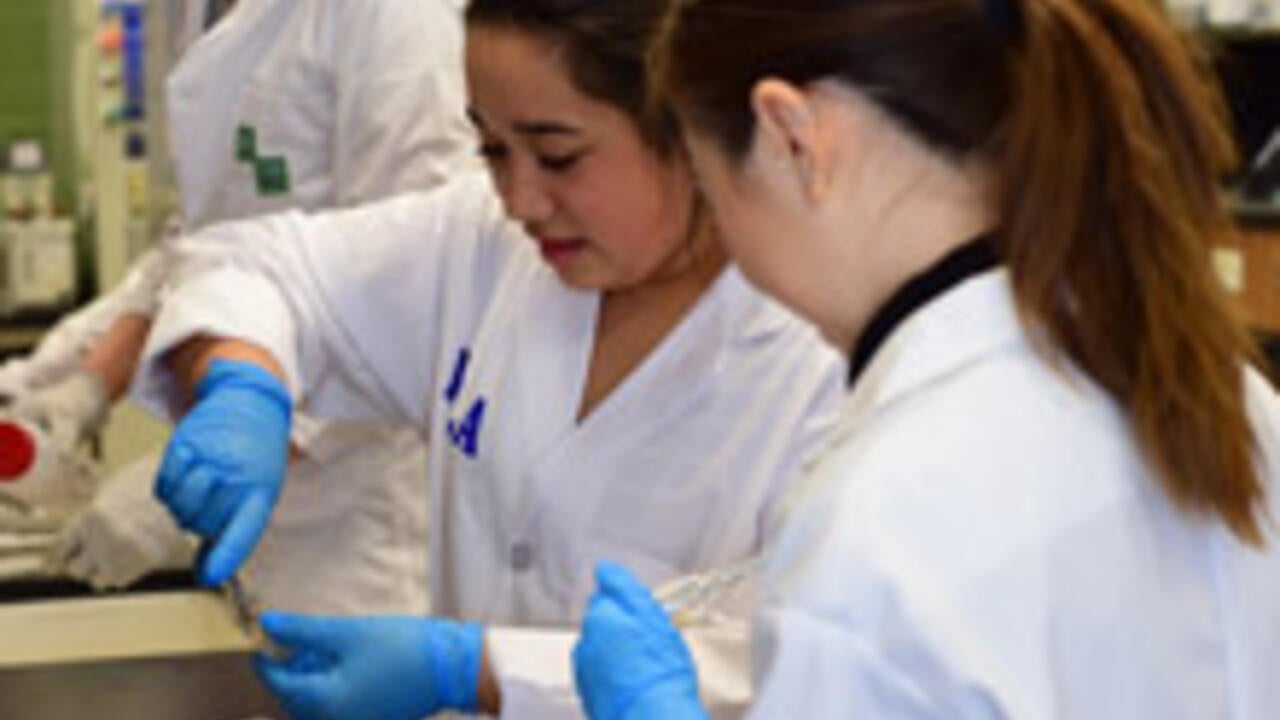
Waterloo biologist and First Nation examine mercury in fish
Kluane First Nation youth, using the latest sampling and analysis techniques in a Waterloo lab, are finding very low levels of mercury in fish

Kluane First Nation youth, using the latest sampling and analysis techniques in a Waterloo lab, are finding very low levels of mercury in fish
A research collaboration between a University of Waterloo biologist and the Kluane First Nation is coming up with good news for the Yukon community - so far, the research team is finding extremely low levels of mercury in the fish.
Rapid climate change, high mercury levels in fish and unaffordable store prices are just some of the threats to food security in Canada’s northern communities. Members of the Kluane First Nation are working with Heidi Swanson, a University Research Chair in the Faculty of Science, to test fish mercury levels as part of a larger food security project.
Two First Nation youth visited the campus this week to learn more about the scientific testing done with 200 fish samples they collected and processed from Kluane Lake last summer. The trip is part of a desire to identify sustainable food sources for the northern community’s next generation. Northern communities are seeing population declines in traditional foods such as moose and sheep and are now looking for other food sources, like fish.
“We’re three hours from a grocery store in Burwash Landing. This is our primary food source so it’s good to know the fish are healthy and they’re keeping us healthy,” said Lenita Alatini, a Grade 9 student from Kluane, who spent the day with Swanson and her graduate student Nelson Zabel.
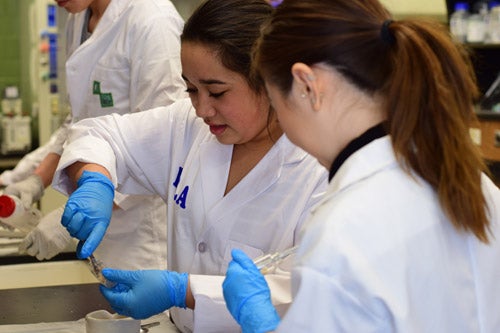
Lenita Alatini, a Kluane First Nations student, is grinding fish samples in a University of Waterloo lab.
Mercury is a particularly mobile and persistent contaminant that is emitted to the atmosphere from industrial activities, then circulates around the globe, and lands on remote lands and waters in rain and snow. Once in the environment, microorganisms transform mercury into methyl mercury, a highly toxic compound that accumulates in organisms and biomagnifies up the food chain.
Alatini was joined by another young researcher, Grade 8 student Nadaya Johnson, Kluane First Nation Youth Councilor Jared Dulac, Indigenous filmmaker Tookie Mercredi and Norma Kassi, the Director of Indigenous collaboration for the Arctic Institute of Community Based Research. The entire team worked together last summer with Swanson and Zabel to collect samples from the lake.
Swanson’s work with the delegation in her lab included preparing samples for mercury and organic contaminant analysis, examining fish ear bones to determine fish ages, and identifying the makeup of the fish’s stomach contents.
“It’s exciting to have the young people analyze the ecosystems within their own lake and understand it much more deeply. It’s an experience they will never forget,” says Kassi. “This is the way science should take place, especially in the Arctic regions. When they’re canoeing on their lake and hunting, they’re going to have a deeper understanding and a deeper respect for what they’ve learned.”
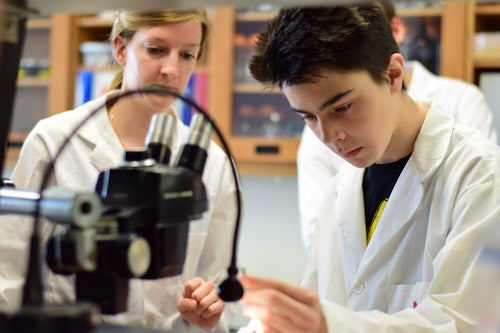
Nadaya Johnson, a Kluane First Nation student, is sawing fish bones in a University of Waterloo lab.
The Kluane First Nation youth also conducted interviews with community elders about historical catch counts, changes in fish taste and texture and traditional hunting grounds and processing methods.
“It was really cool to see what a University is all about, and to understand all of the things that happen to the fish samples we collected this last summer. It’s really neat to see how we figure out how old the fish are and how much mercury is in them,” said Nadaya Johnson.
The campus visit also included a welcome circle with a traditional smudging ceremony, tea and bannock (a biscuit served in many Aboriginal communities) and a lab coat decorating activity at the University of Waterloo’s Aboriginal Education Centre.
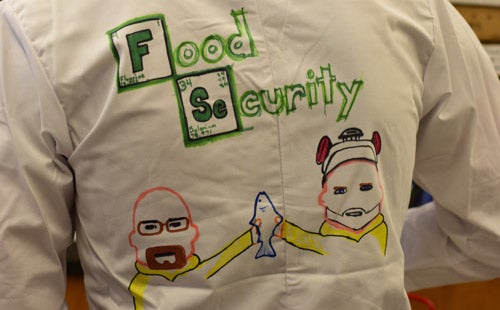
A lab coat decorated by Kluane First Nation Youth Councilor Jared Dulac.
“It’s a good news story – these youth are combining the best of both the scientific and traditional worlds and taking charge of their future,” says Swanson, a member of the Water Institute. “I’ve never seen northern lake trout with lower levels of mercury than those from Kluane Lake. I’m flabbergasted.”
Kassi said the project is about building capacity and educating youth at a time when remote communities need to adapt to the changing climate. “It’s very important because these kids live on the land – they’re constantly on the land – they’re harvesting, they’re fishing, they’re hunting, they’re growing vegetables with their grandmothers. They’re now starting to be involved with the whole governing system. They’re doing a lot of incredible things in that small community. They’re really trying to take control of their future.”

Read more
Here are the people and events behind some of this year’s most compelling Waterloo stories
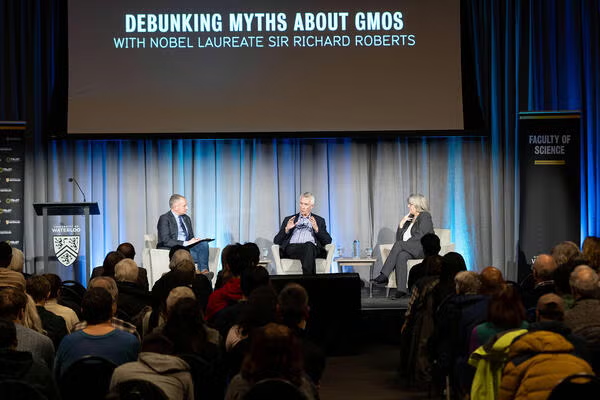
Read more
Nobel Laureate debunks the biggest lie you’ve been told about your food — and why it’s time to trust the science

Read more
Meet the five exceptional graduate students taking the convocation stage as Class of 2024 valedictorians
The University of Waterloo acknowledges that much of our work takes place on the traditional territory of the Neutral, Anishinaabeg, and Haudenosaunee peoples. Our main campus is situated on the Haldimand Tract, the land granted to the Six Nations that includes six miles on each side of the Grand River. Our active work toward reconciliation takes place across our campuses through research, learning, teaching, and community building, and is co-ordinated within the Office of Indigenous Relations.